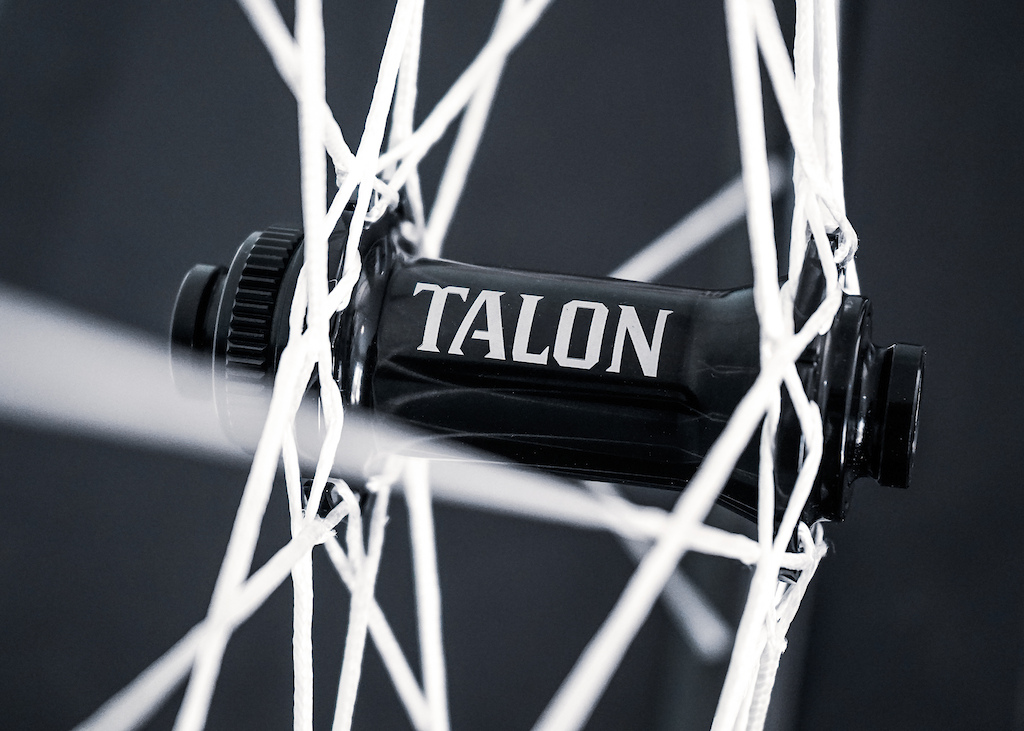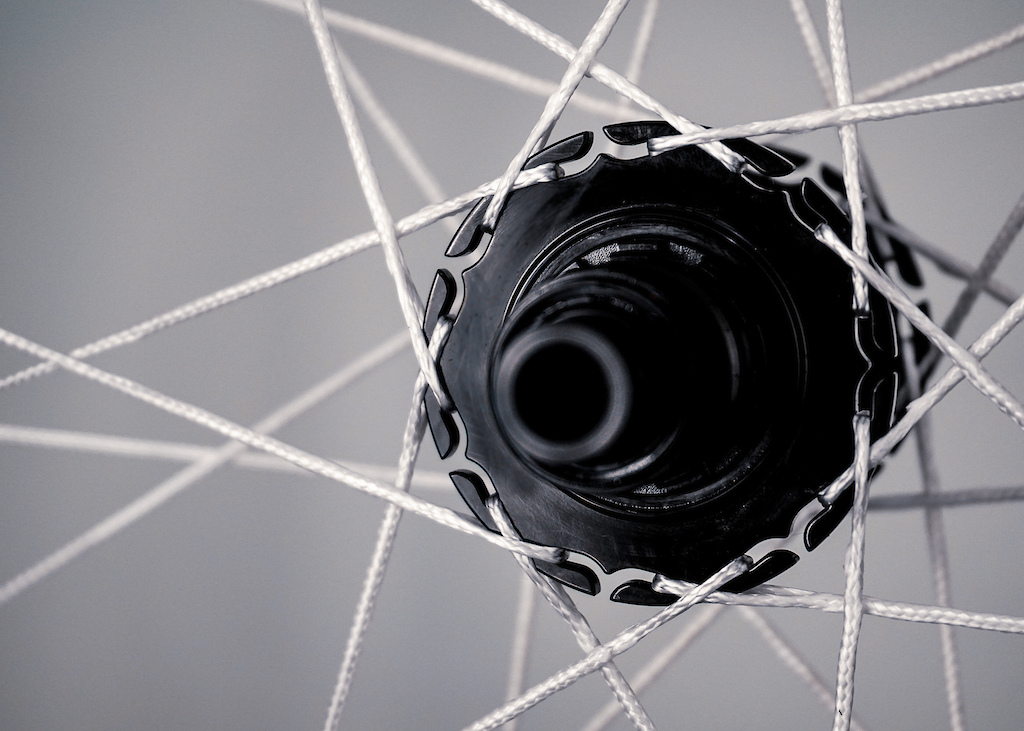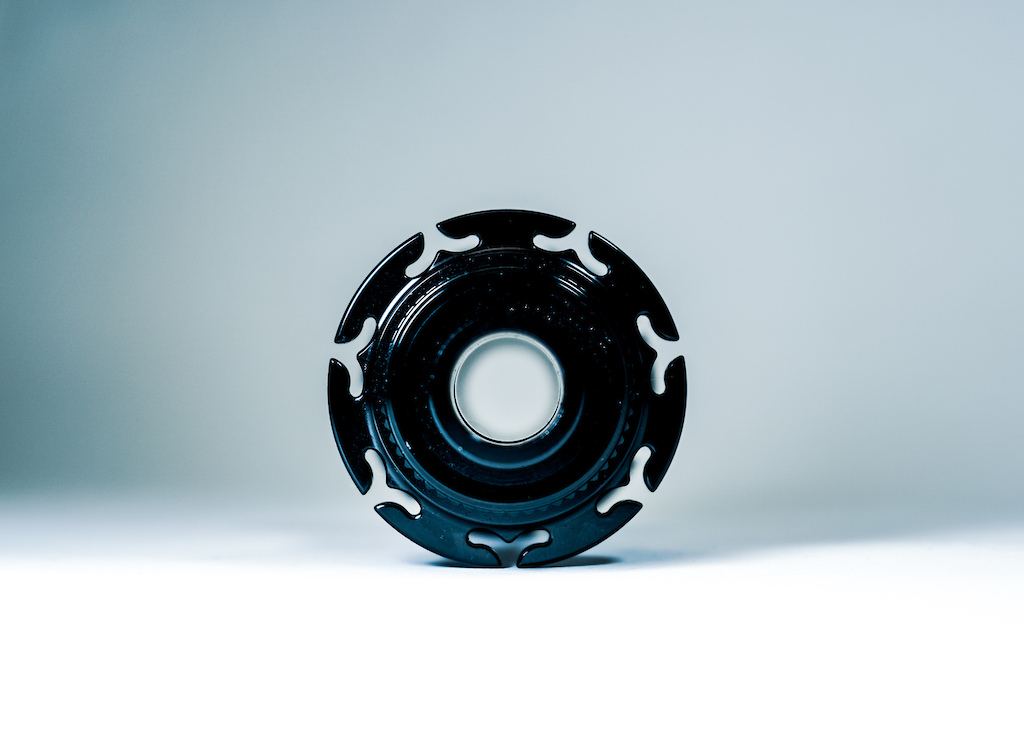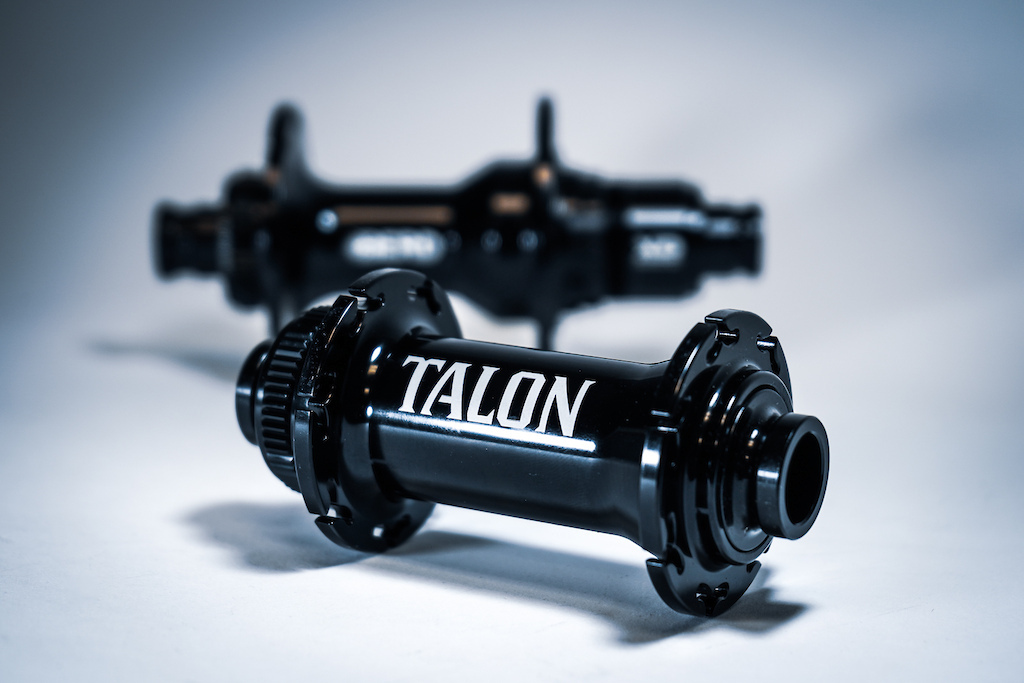Berd Bring Their String Spoke Technology to New Hubs
You may well have seen Berd's take on the mountain bike wheel on this site before. We have reviewed the concept previously, as well as featuring their latest release - the bold 1400 gram enduro ready Hawk30 wheels, which we hope to be testing here in BC over the summer.
Calling them string spokes is perhaps somewhat unfair. The polyethylene spokes are at the core of Berd's wheel ethos, but now the company is branching out - first to include their own rims and now their own hubs. You could of course opt for the spokes and hubs laced to a different brand's rim.
Previously, you could use standard eyelet hubs with Berd's spoke system, but that required drilling out the spoke holes to remove any sharp edges, which might compromise manufacturers' warranties. These new Talon hubs are ready from the get-go, and have a unique flange design intended to make lacing up the hubs with Berd's spokes as quick and easy as possible.
Berd say these hubs are designed for durability, and have done extensive in-house testing to verify that claim. It should also be noted that these hubs are center-lock only. I imagine if you aren't put off by these unorthodox spokes, this will seem inconsequential but it is worth a mention.

The hubs weigh 156 g for a front and 306 for an XD freehub equipped rear. They are also available in Microspline and 11-speed freehubs.
In regards to engagement, initially there will be a run of hubs equipped with a 36t dual sprung ratchet before a 54t ratchet system will be available in four to six weeks. The hubs have a retail price of $495 USD, and they're also available on Berd's complete carbon wheelsets, with prices starting at $1,995 USD.
For more information please visit their website.
Author Info:
Must Read This Week
Sign Up for the Pinkbike Newsletter - All the Biggest, Most Interesting Stories in your Inbox
PB Newsletter Signup






One spoke has broken under exceptional circumstances. My rear axle broke in a high load and high speed situation, putting one spoke into the derailleur. The spoke ripped the derailleur in half through both parallelogram plates; presumably, once the intact spoke had destroyed the derailleur and exposed a sharp fracture surface, the jagged metal cut the spoke. I feel that's a fair situation for a spoke to fail.
Not saying that these spokes/wheels are for everyone, but I haven't had any problems with them in my own experience. I'm curious, have you had any bad experiences with these?
www.pinkbike.com/u/afrauenglass
put up real photos of yourself... I'm not an anonymous poser...
Are you doing bigger jumps than Barry Nobel? Maybe watch his review video below:
www.youtube.com/watch?v=EKYIQACqgqw
Also, a little lesson on material properties, a berd spoke will out perform any metal spoke in tensile strength, hands down. When you land to flat, you are putting your spokes into either compression or tension. Once again, a metal spoke will not out perform a polymer spoke in this test.
But keep believing what you want. Don't let 5G get you down...
www.mtb-mag.com/en/tested-berd-spokes-re-lace-program
The spring rate of purely tensile spokes is not necessarily different from that of steel. Berd spokes happen to have a slightly lower spring rate than the thinnest common steel spokes (⌀1.5 mm), but there's nothing stopping Berd, Spinergy, etc. from making a fabric spoke with the same spring rate as a steel spoke - or stiffer, if they wanted to.
There's also the question of coefficient of restitution and damping properties. The fabric spokes have a lower coefficient of restitution (slower rebound), though I'm uncertain whether that has a significant effect on wheel properties. I can attest that Berd wheels feel nicer than the same wheels with steel spokes, though I can't say how much of that is due to lower stiffness vs. rebound properties.
Any idea about how I could refer to this category of spokes without starting a forum war? “Tensile-only” appears to create some sort of giant misunderstanding. I don’t think I can call Spinergy “fabric” spokes because of their composition and sheath- and there are also carbon spokes out there in the mix.
Maybe “nonmetallic” or “knotable”?
I usually refer to them as fabric spokes, but if you're talking to people who don't understand that bicycle spokes are effectively purely tensile members, then it's probably a lost cause. Maybe you've seen the massive replies I sometimes provide to help people understand; our time and energy are finite, and I recognize I sometimes spend mine poorly on such people.
www.theproscloset.com/products/mavic-r-sys-slr-aluminum-tubular-700c-wheelset
In any case, it's still not clear to me how the as-built wheel stiffness of Spinergy compares to Berd or steel spokes, nor is it clear to me the significance of coefficient of restitution or damping. Anecdotal evidence - my own included - indicates the fiber spokes may have a nicer ride feel, though I'm not aware of any blind testing to eliminate placebo effects. It would also be valuable to test the fiber spokes with weights to hold constant the unsprung mass.
There's a lot of testing to be done before we make any conclusions!
Pretty sure there was a recall on the first generation of that wheel, as the spokes could shatter if they were loaded in the middle (ex. a stick or derailleur got into the wheel), hence the change of spoke material on the rear drive side.
I remember some test to determine the contribution of the spokes under compression; my recollection of the results is almost nonexistent, but I think it was found to be small, relative to the tensile contribution ... ?
The armchair engineer in me thinks that the spokes would probably flex to the side under any significant compression as they weren't that wide, but I could be wrong!
You must have a good armchair, because you're correct that something with the slenderness ratio of these spokes is vulnerable to buckling. Unfortunately, TraComp ("traction and compression") spokes couldn't bow much before breaking, therefore the compression load couldn't be anywhere near the maximum tension load.
TraComp spokes were overbuilt for their tension loads to ensure they were stiff enough to handle sufficient compression loading, preventing them from being lighter than thin steel spokes; their purpose was to allow thinner rims due to reduced spoke tension. Traditional spokes would go slack at low loads if they were used at such low tension.
The TraComp design succeeded in creating a stiff wheel at a very low weight (for an aluminum rim), but it introduced many other issues, such as the brittle spokes, difficulty of spoke replacement, fragile compression ring inside the hub, and poor aerodynamics of the large spokes - not to mention the cost. Modern road bike design places far greater emphasis on aerodynamics, favouring thin, steel spokes with aerodynamically sculpted rims.
@TEAM-ROBOT: Yes, the nipples of many Mavic wheelsets thread into the rim. TraComp wheels also have an internal ring to support the spokes at the hub end.
Edit: Here's a good article on the R-SYS wheels with TraComp spokes.
As far as the rest of this conversation, a difference between the Berd and the Spinergy spokes "feel" could have to do with the (as mentioned) construction, the Berd spoke is 12 strand braid vs. the Spinergy's PBO construction. The braid will allow for a tiny amount so stretch (necking), even when tensioned, the PBO shouldn't. I recall from my sail boat rigging days when PBO was starting to make it's way in that it was chosen since the shroud lengths were great enough that using a braided shroud would cause a tiny amount of stretch even when tensioned. Most of the boats I race these days use Dynema check stays, which can be tensioned on the fly, and are more flexible than PBO.
My bad, I forgot about those.
Few road riders even sprint - ever - yet that's a common explanation for why someone would want lateral stiffness. My road wheels have terrible lateral stiffness; I don't mind sprinting on them, though they have reduced my cornering speed due to a less precise sensation that reduces my confidence, even if it may not reduce the upper limit on cornering speed - might even improve it due to increased traction.
It quickly became clear that the extra cost of the TraComp design would've been better spent on carbon rims with traditional spokes. The weight is likely to be for the same price and lateral stiffness (whether that level of stiffness is necessary is a separate conversation), but the overall performance and safety would be higher.
Wider tires have improved comfort and handling as much as every "laterally stiff and vertically compliant" innovation, but only a super wide rim - inevitably made from carbon if we don't want them to weight as much as a Mag 30 - can have a useful aerodynamic interaction with such a tire, so tires that provide modern levels of comfort & traction largely exclude aero gains for anyone not into dropping $1 - $2+ K on wheels.
After that's it's things like hidden cables and Kamm tail tubes, which are usually small, relative to the other factors.
René Herse must be combined with a wool jersey (it's okay if closer inspection of the tag reveals 10% wool content), and anything with a chainring larger than 48 T must be combined with an aero helmet - but only on gravel; maximum-ventilation helmets are acceptable on pavement.
Thank you for observing these rules and "grind safely"!
What is the weight for your wheelset? Mine should be ~1525g. Not bad for enduro.
Current rims are Race Face ARC 36, which aren't the lightest, but they've been durable and the offset was the highest I could get at the time, which helps balance the tension when I don't have the option to vary spoke diameter on either side. Complete weight is ... I forget, somewhere in the mid-1300s. Current rim options could go well under 1200 g while maintaining enduro-level durability and 35 mm inner width.
I'm usually the first one to say weight is overrated, but it's not trivial to drop up to a kilogram off the wheels without having to get sketchy.
They look like dt swiss internals. 1:14 into the video. youtu.be/cc16PT2G-c0
Yea, thinking if they are DT Swiss ratchets, it would have been stated and advertised. So... probably not.
Newmen Fade:
245g and $200
DT 350:
240g and $300
I9 hydra:
290g and $345
Then all we need is DT to make the 350 with hook flanges. C'mon DT... dooooo iiittt......
To be fair to Berd, their spokes really do improve the ride. I've been on them for years and what I notice most is the ride quality. Light weight is great, but I can't say with certainty I can perceive 100 - 200 g less weight; the ride is definitely smoother, though, like reducing tire pressure without the downsides of actually doing so, or getting the reduced handlebar deflection of an inverted fork without the reduced steering precision.
No opinion, just some objective data
Love the smell of fresh cut UHMWPE.
As you said, there are people who need to earn a living from selling a niche spoke, so there's going to be some mark-up. I could barely even get a discount a few years ago when discussing OE pricing - unlike some bike bits that have nearly 10× mark-up from OE pricing.
Maybe Berd will be acquired by a company that already has all the necessary machinery to churn them out by the millions at one-third the price.
DIY is a hobby for me, saving money only a secondary objective. Making stuff, tinkering until you find a way to do it, that is fun. Like bike maintenance. It's a lot cheaper to do it yourself than bringing it to a shop but I like wrenching. If I wouldn't enjoy it I would pay someone to do it.
@kingbike2: Wheels can work in tension or compression. Car wheels do work in compression, as do some carbon bike wheels, like the old Spins or newer AX-Lightness. Car wheels can also work in tension, which is mostly true for spoked wheels, though their spokes are so short and so stout that they can take some compression. Not bike spokes, though!